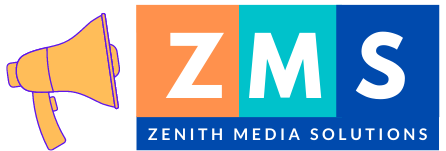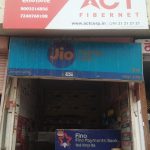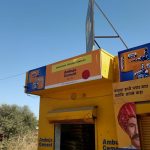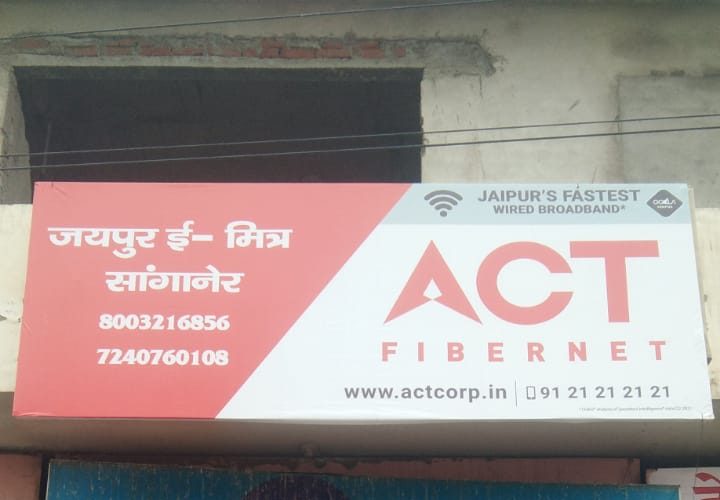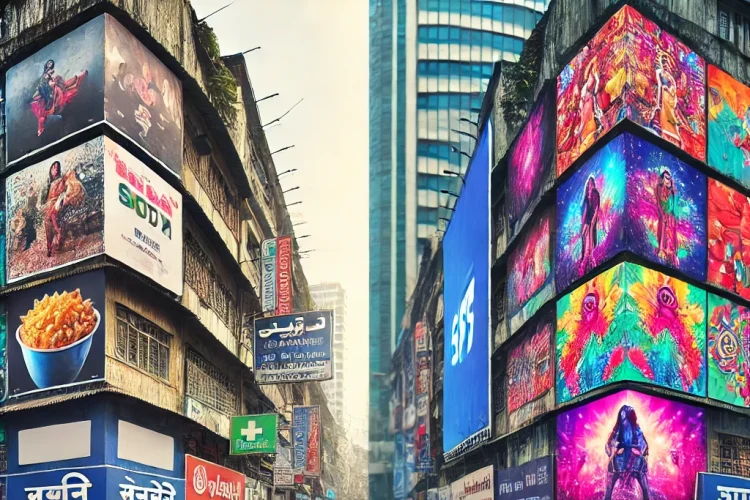
In the fast-paced world of advertising, businesses often look for cost-effective yet impactful marketing solutions. Despite the rise of digital marketing, flex board advertising remains a powerful tool in India. Its affordability, high visibility, and direct approach make it an attractive choice for businesses of all sizes. Whether you’re a small retailer or a large enterprise, understanding how to use flex board advertising effectively can help you maximize brand exposure and drive customer engagement.
This beginner’s guide covers everything you need to know about flex board advertising in India, from benefits and design tips to legal considerations and cost structures.
1. What is Flex Board Advertising?
Flex board advertising refers to printed banners or hoardings displayed in strategic locations to capture public attention. These boards are typically made from polyvinyl chloride (PVC) material, ensuring durability and vibrant print quality. Flex boards come in various sizes and are used for promotions, political campaigns, directional signage, and business branding.
Types of Flex Boards:
- Frontlit Flex Boards – Lit from the front, commonly used in shop fronts and roadside advertisements.
- Backlit Flex Boards – Illuminated from behind, providing enhanced visibility at night.
- Vinyl Flex Boards – Printed on high-quality vinyl for sharper images and durability.
- Eco-Friendly Flex Boards – Made from biodegradable materials to reduce environmental impact.
Example:
A grocery store in Chennai increased foot traffic by 35% after installing a backlit flex board near a metro station.
2. Why Choose Flex Board Advertising in India?
Key Benefits:
- Affordable Marketing Solution – Compared to digital advertising, flex boards have lower production and installation costs.
- 24/7 Brand Exposure – Unlike online ads, flex boards remain visible day and night.
- Localized Targeting – Businesses can place flex boards in high-traffic areas to attract potential customers.
- Customizable Designs – Offers flexibility in size, colors, and graphics to align with branding needs.
- Ideal for Small Businesses – Perfect for retailers, restaurants, and local service providers looking for cost-effective promotion.
Challenges:
- Limited Interaction – Unlike digital marketing, flex boards don’t allow instant customer engagement.
- Environmental Concerns – Traditional PVC flex contributes to non-biodegradable waste (though eco-friendly alternatives are available).
- Legal Restrictions – Some cities impose strict regulations on outdoor advertising placement.
Case Study:
A tuition center in Hyderabad saw a 50% increase in student enrollments after strategically placing flex boards near schools and coaching hubs.
3. How to Design an Effective Flex Board
The effectiveness of a flex board depends on its design. A well-crafted flex board attracts attention and delivers a clear message.
Essential Design Elements:
- Eye-Catching Headline – Use bold, clear text that conveys your main message.
- High-Resolution Images – Avoid pixelation by using high-quality graphics.
- Minimal Text – Keep it simple and easy to read from a distance.
- Brand Colors and Logo – Maintain consistency with your brand identity.
- Call to Action (CTA) – Include contact details or an invitation to visit your store/website.
- Contrast and Readability – Use contrasting colors to ensure text is readable in daylight and at night.
Common Mistakes to Avoid:
- Overloading with text or images.
- Using small fonts that are hard to read.
- Choosing colors that blend into the background.
- Placing the board in low-visibility locations.
Example:
A restaurant in Pune used a flex board with a catchy slogan, high-quality food images, and a QR code linking to its online menu. This led to a 25% increase in takeaway orders.
4. Where to Place Flex Boards for Maximum Impact
The location of your flex board significantly affects its success.
High-Traffic Locations:
- Near Public Transport Hubs – Metro stations, bus stops, and railway stations.
- Busy Market Areas – Malls, shopping streets, and wholesale markets.
- Highways and Roadside – Ideal for visibility among daily commuters.
- School and College Campuses – Great for educational services and youth-focused products.
- Event Venues – Concerts, fairs, and exhibitions attract large audiences.
Pro Tip:
Before placing a flex board, observe footfall patterns in the area to determine peak traffic times.
5. Cost of Flex Board Advertising in India
The cost of flex board advertising varies based on size, location, and material quality.
Estimated Cost Breakdown:
- Design & Printing: ₹3,000 – ₹10,000 per board
- Installation & Rent: ₹5,000 – ₹50,000 per month (location-dependent)
- Maintenance & Replacement: ₹1,000 – ₹5,000 per year
Budget-Friendly Tip:
Printing in bulk and negotiating long-term rental agreements can help reduce costs.
6. Legal Considerations and Permissions
Many Indian cities have regulations regarding outdoor advertising. It’s essential to obtain necessary permissions before installing flex boards.
Key Legal Aspects:
- Municipal Approvals: Required for placing boards in public spaces.
- Private Property Agreements: Ensure written consent from property owners.
- Size and Height Restrictions: Vary by city; check with local authorities.
- Eco-Friendly Regulations: Some states encourage the use of biodegradable flex materials.
Example:
Delhi imposed restrictions on non-biodegradable flex boards in 2022, leading businesses to switch to fabric-based banners.
7. Combining Flex Board Advertising with Digital Marketing
While flex boards are effective, integrating them with digital marketing strategies enhances results.
Best Practices for Integration:
- QR Codes on Flex Boards – Link customers to websites, offers, or WhatsApp inquiries.
- Social Media Hashtags – Encourage customers to post photos and tag your business.
- Google Maps Listings – Include directions to your business on the flex board.
- Limited-Time Offers – Promote exclusive discounts for customers who mention the flex board ad.
Example:
A boutique in Jaipur used flex boards with a QR code for WhatsApp inquiries. Within three months, their WhatsApp customer base grew by 70%.
8. Future Trends in Flex Board Advertising
With increasing focus on sustainability and digital integration, flex board advertising is evolving.
Emerging Trends:
- Eco-Friendly Materials – Shift toward fabric and biodegradable banners.
- Smart Flex Boards – Digital LED billboards replacing static flex boards.
- Geo-Targeted Advertising – Combining GPS data with flex board placements.
- Interactive Elements – Augmented reality (AR) features on printed ads.
Example:
A tourism board in Kerala used an AR-enabled flex board that displayed 3D animations when viewed through a mobile app.
